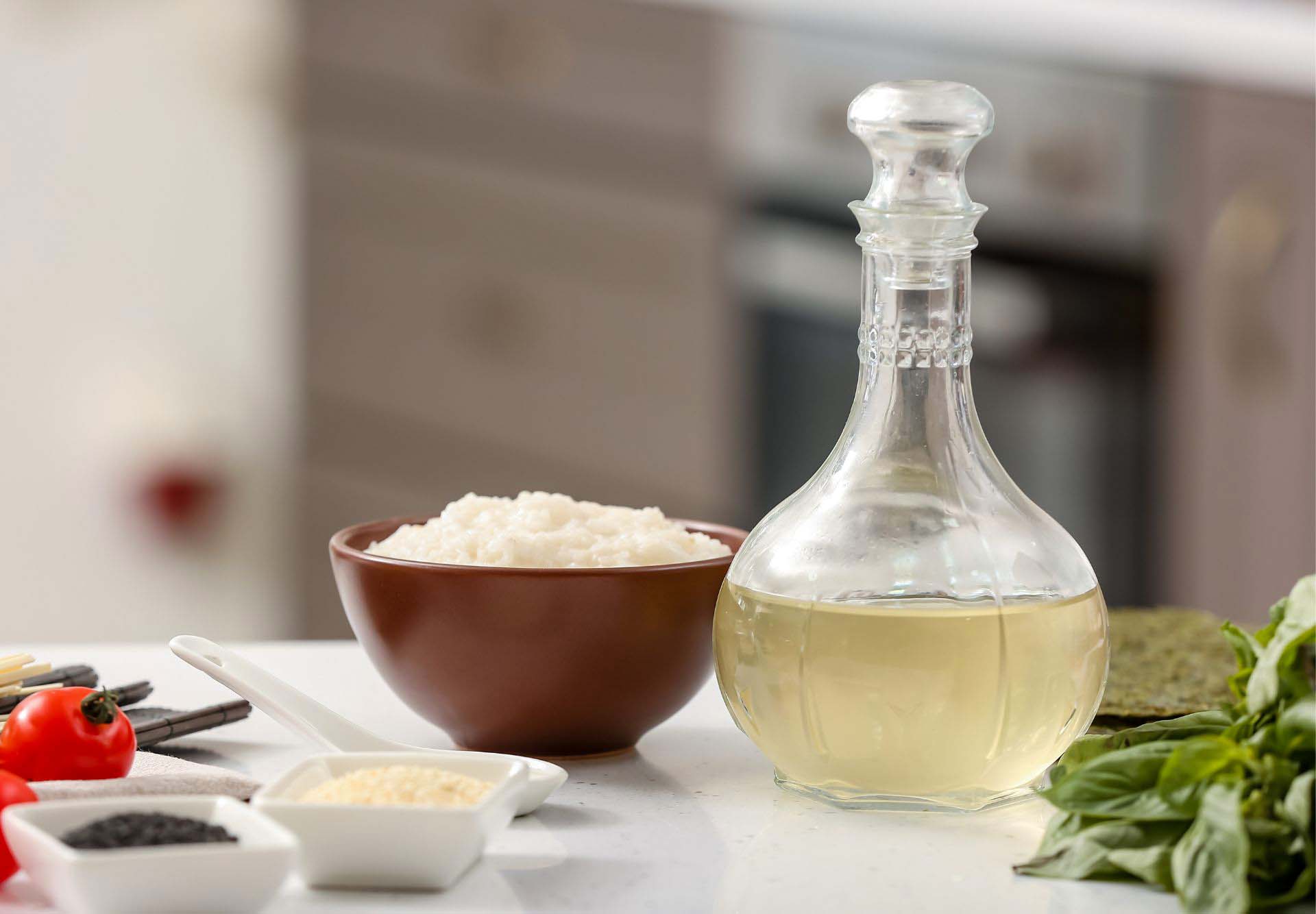White rice vinegar (mi cù), black rice vinegar (or Chinkiang Vinegar), and red rice vinegar are the three most common rice vinegar used in Chinese cookery.
WHAT IS WHITE RICE VINEGAR?
White rice vinegar (mi cù) is a milder vinegar alternative to its distilled Western counterpart. Its closest flavor comparison is to cider vinegar, albeit milder and lacks the fruity overtones of cider vinegar. The color can also be anywhere from clear (like water) to a rich golden brown.
Vinegar is produced by further fermenting rice wine. For this reason, you may also see the term “rice wine vinegar” applied to this component. There is no taste or smell difference between rice vinegar and rice wine vinegar; the only difference is the label.
From China, this substance made its way to Japan around the fourth and fifth century. It’s used frequently in Japan for seasoning sushi rice, sauces, and other dishes. Instead of vinegar, lime and tamarind are typically employed as acidic components in Southeast Asian cooking. Thus, most of the brands stocked are from Japan, China, or Taiwan.
HOW DOES IT WORK?
Our Sichuan Stir-fried Potatoes and other stir-fries benefit from the acidity added by rice vinegar. Adding it to sauces and condiments makes them tangier. For instance, it gives the sauce for Cold Noodles with Shredded Chicken just the right amount of vinegary zing.
BUYING & STORING
Your local Asian supermarket probably has a wide variety of brands. It’s gotten so widespread that you might even be able to find it in your neighborhood grocery store. If you’re unsure, look it up online.
You’ll find a variety of products from Japan, China, and Taiwan. Wan Ja Shan is another popular brand in the Northeast; it’s headquartered in New York.
As you shop, you’ll notice that most companies provide both an unseasoned and a seasoned option.
Typically, only glutinous rice and water are used to make the plain kind, while sugar and/or salt are added to the seasoned variety. Although the two are largely interchangeable, we typically choose the basic variety when making purchases.
While we favor the Taiwanese Kong Yen brand, you should test a few different names to find your preference. Place in a dry, cool location, such as a pantry. It can be stored for up to 2 years.
SHANGHAI RICE VINEGAR
It’s possible that some of our recipes will call for Shanghai rice vinegar. This rice vinegar, which has a deep amber color, is gentler and sweeter than the standard kind. It has a moderate vinegar flavor, making it ideal for dipping spring rolls, soup dumplings, or preparing sauces and salads.
ALTERNATIVES TO RICE VINEGAR
You can use normal white vinegar, cider vinegar, or white wine/champagne vinegar in place of rice vinegar in recipes calling for a little amount of acidity (two tablespoons or less). Recipes that call for white vinegar should have roughly half that quantity added (it is more acidic).
Regular white vinegar is too harsh and acidic to use in raw applications (such as dipping sauce or salad). Vinegar made from cider apples or vinegar made from white wine or champagne might be used instead. You might also use red rice vinegar or black rice vinegar in its place.
Note that many people ask if rice vinegar can be used instead of rice wine, therefore, we thought it was vital to address the subject here. Although rice vinegar is a byproduct of rice wine fermentation, the two products cannot be substituted for one another due to their distinct tastes. Just compare a bottle of red wine to a bottle of red wine vinegar to see how dissimilar they are!
